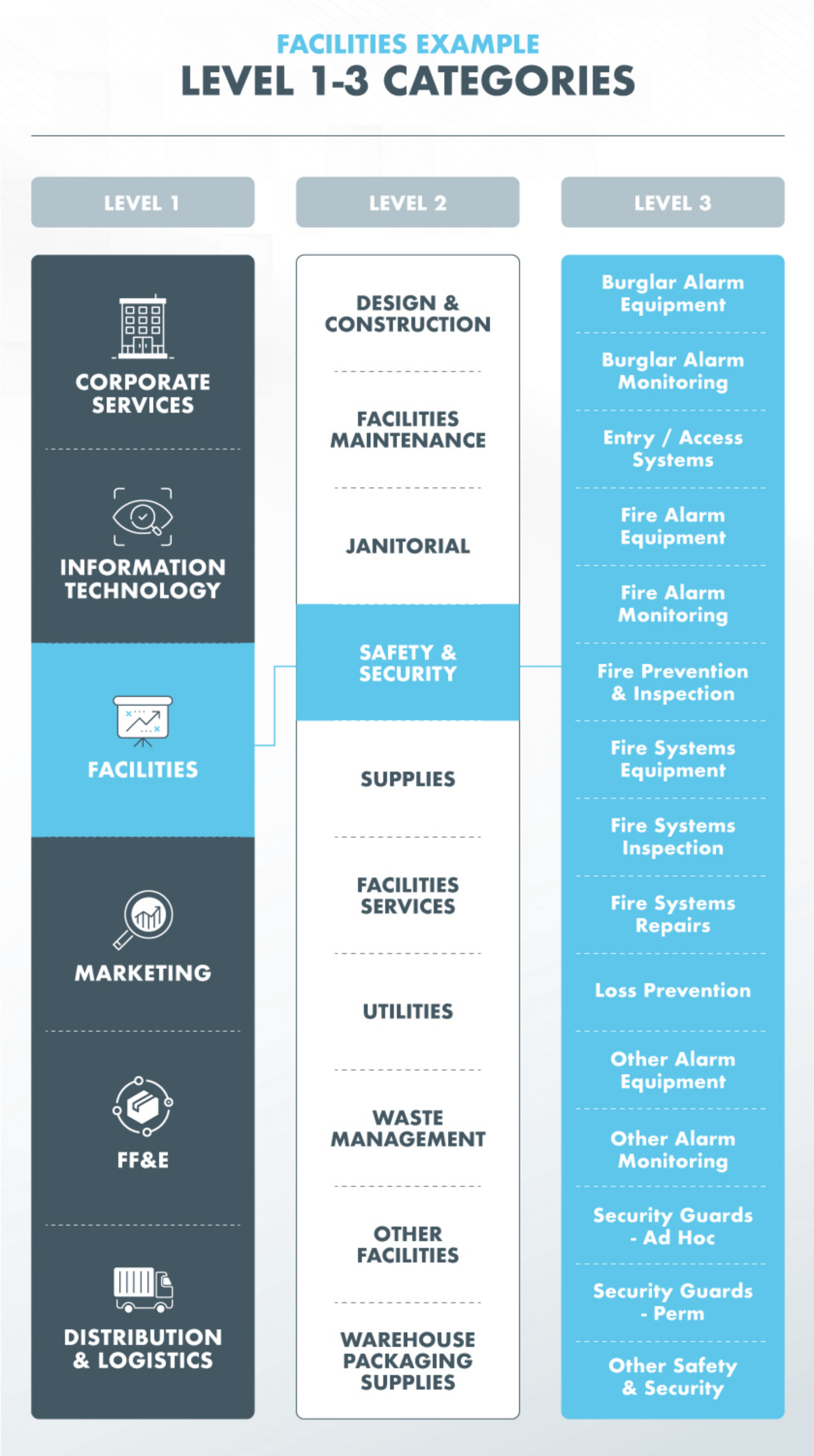
Debunking The Generalist
Delusion in Indirect
Procurement
What does your spend management approach look like? Most visionary CFOs will see it as more than “just keeping the lights on” as a necessary cost of doing business. As a potential strategic differentiator, it’s no surprise that Deloitte’s CFO Signals survey listed cost management as one of the top 3 priorities for CFOs in 2024.
Managing direct spend is often seen as a vital aspect of an organization’s purchasing strategy. Companies allocate substantial and dedicated resources to procuring materials and goods that go directly into the production of products, sale of merchandise, or services a company offers. Which makes sense, as it supports their brand promise, and core to everything they do.
However, the purchasing of indirect goods and services is a completely different story. We commonly find that a handful of individuals are responsible for the hundreds or even thousands of indirect categories that are necessary for an organization’s daily operations. Spending in areas like IT, Marketing, Distribution and Logistics, Human Resources, Facilities Maintenance and Packaging typically consume more than 20% of an organization’s revenue, but often represent the areas of greatest spending inefficiency. Depending on the size of the organization, this can represent hundreds of millions, if not billions of dollars in overlooked expenditures.
Here’s a real-life example in action: a retail client had more than 400 people on their merchandising and buying team responsible for purchasing 1,000 SKUs related to their direct goods and services, but only 10 resources covering over 100,000 SKUs across their total indirect spending.
The consequences of this? Stretched-thin procurement teams lack sufficient time and resources to conduct market analyses and negotiations effectively due to a lack of available data. Without market frequency and the requisite expertise in these categories, securing and maintaining best-in-market pricing is an insurmountable challenge for under-resourced purchasing teams. When the procurement team is perceived solely as ‘generalists,’ business budget owners often do not recognize them as having the necessary category expertise. Consequently, the team is utilized more tactically rather than being treated as strategic partners.
Often the internal teams typically lack both the data and capacity to consistently run sourcing events for every category of indirect spend, which is necessary to stay on top of market trends and price fluctuations.
With resources stretched thin, these procurement professionals can only manage to run sourcing events in specific areas infrequently, resulting in out-of-sync price points and less-than-ideal spending decisions.
The Complexity of Managing Indirect Spend
Indirect procurement is complex for a number of reasons, and managing and controlling the sheer volume and diversity of goods and services under indirect procurement is one. With a broad range of suppliers, indirect procurement requires extensive vendor management with individually tailored purchasing strategies. Each category comes with a unique set of specifications, contract terms and procurement challenges. It requires a different approach and expertise to execute these sourcing events effectively.
More often than not, the diversity and complexity of these categories lead to ongoing engagements with several specialized suppliers. This results in a supply base that is both cumbersome and fragmented, which obscures spending patterns and opportunities for consolidation.
Consolidating spend under a single supplier could offer significant cost savings and efficiencies, but without clear visibility into spending across the organization, leadership teams miss out on these strategic opportunities.
The graphic below shows an example of how a single “Level 1” category like Facilities can be broken down into ten “Level 2 categories”. Zoom into a “Level 2 category” like Safety and Security, and it can be broken down into over a dozen “Level 3” categories.

In many cases, a decentralized approach is common for indirect, where individual departments take charge of their own purchasing requirements. However, this approach comes with significant pitfalls. Too often, individual departments are left with little purchasing oversight or controls, which results in departments feeling empowered to buy outside of policy without the sourcing discipline to seek out competitive terms and pricing.
The lack of centralized oversight means that the organization fails to leverage its aggregate purchasing power. It can also lead to duplicate purchases, failure to capture market and pricing intelligence, and wasted time and effort manually pulling data to report from these different sources.
But it is important to take control of indirect spend, despite its complexity. If businesses address this base of spend effectively, they can see a significant pay-off on the company’s operational efficiency and bottom line without any negative impact to the product quality or customer experience. However, this process requires the right people with the right tools, expertise and data.
The Hiring Conundrum of Indirect Procurement
Hiring for indirect procurement roles can be a catch-22 situation. Even when organizations decide to allocate resources to manage indirect spending, they often make the mistake of hiring a generalist to oversee their entire indirect procurement function. But for the reasons mentioned above (complexity, massive variation and volume of categories and lack of overall visibility into spend), a single generalist is just not equipped to be able to manage and optimize an organization’s entire base of indirect expenditures.
Organizations often fail to allocate sufficient resources for hiring category specialists, expecting them to handle responsibilities beyond their specialization. This practice diminishes their effectiveness, overloads them and ultimately turns them into generalists, leading to tactical rather than strategic utilization.
On the flip side, building a team of indirect specialists as industry demands evolve and grow would be prohibitively expensive and not a viable solution for most companies. In fact, a Gartner survey in mid-2023 found that 86% of procurement leaders believe they do not have enough talent to meet future needs of their function and anticipate a talent shortage in the near future.
The stark reality is that very few organizations have the right level of expertise to leverage indirect procurement as a strategic engine for profit improvement.
It’s evident that the traditional approach of relying on generalists to handle multiple indirect categories is no longer viable. But the question remains: how can organizations effectively manage indirect spending without overspending on a team of specialists?
One thing is certain – it’s time businesses start viewing indirect procurement as more than the “cost of doing business”, and treat it as an underutilized strategic asset. How will your organization rise to this challenge?
LogicSource’s Center of Excellence boasts over 150 category-focused experts who add unique value in strategic sourcing, category management, analytics, benchmarking, and contracting support. We have more than just procurement experience – our experts have been in or have even been in charge of running the business functions they now support. Our team includes marketing experts with decades in advertising agencies and facilities management professionals with extensive warehouse experience, and we’re in the market daily executing thousands of sourcing events annually on behalf of our client partners.
Clients who partner with us gain access to a level of cross-industry expertise, scale, and leverage that would be too cost-intensive for most clients to achieve on their own. Get in touch with us to learn more about how we help empower clients to deploy a best-in-class procurement function without the risk of a years-long project, recruitment challenges, and potential over-investment.






